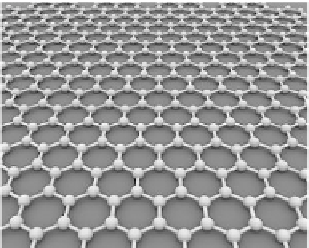Environmental Engineering Reference
In-Depth Information
DFT offers a promising way to investigate the ground state of
many-body systems. In DFT, the unsolvable many-body problem
is simplified into a solvable one-particle problem under effective
external potential. All the complexity arising from many-body in-
teractions is contained in the exchange-correlation (XC) functional.
The exact form of XC functional is unknown and needs to be
approximated. The success of DFT relies on the fact that even very
simple approximations (local density approximation and generalize
gradient approximation) to XC functional work well for most of
systems.
Using first-principles approaches, the Hamiltonian of phonons
can be calculated for realistic materials with high accuracy. Based
on the obtained Hamiltonian, the NEGF method can provide a
complete description on quantum thermal transport. Therefore, by
combining first-principles approaches with the NEGF method, a
first-principlespredictionorcomputationalexperimentonthermal-
transport properties of realistic materials becomes feasible. The
first-principles-based NEGF is a powerful tool in the research of
quantumthermal transport.
3.3 Thermal Conduction of Graphene: Experiment
Graphene, amonolayerof
sp
2
-bondedcarbon atomsdensely packed
in a honeycomb crystal structure (Fig. 3.5), is a conceptually new
material,because(i)itisthefirststrictly2Dmaterialthatopensnew
Figure 3.5
Graphene isa 2D material made of carbon atoms.









